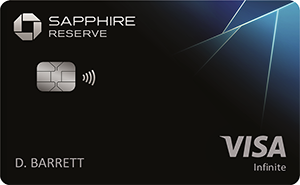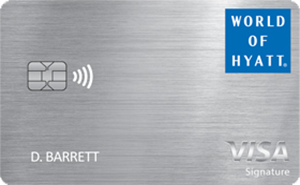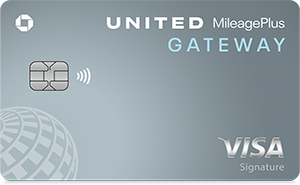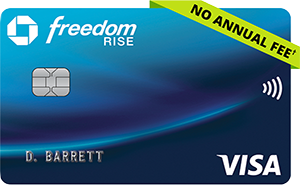Does the Chase Sapphire Preferred Card Cover Rental Cars? A Complete Benefits Guide

If wanderlust runs through your veins, having one of the best travel credit cards on the market can help you earn rewards for free vacations and provide benefits that can protect your trip should things go awry on your journey. The Chase Sapphire Preferred® Card ticks all of these boxes, which makes it a favorite of travel enthusiasts.
Beyond impressive rewards, which include a welcome bonus offer of 75,000 points after you spend $5,000 on purchases in the first three months of account opening, the card comes with comprehensive travel protections. Of these, the Sapphire Preferred Card’s car rental insurance is among the most prized by travelers for its better-than-average coverage in comparison to other cards with similar annual fees.
If you’re considering the Sapphire Preferred Card for its rental car insurance coverage, we’ll show you how it works, what’s covered and pitfalls to avoid.

400+ Credit Cards
Analyzed independently across 50+ data points in 30+ product categories

Reviewed
By a team of credit card experts with an average of 9+ years of experience

Trusted by
More than one million monthly readers seeking unbiased credit card guidance
CardCritics™ editorial team is dedicated to providing unbiased credit card reviews, advice and comprehensive comparisons. Our team of credit card experts uses rigorous data-driven methodologies to evaluate every card feature, fee structure and rewards program. In most instances, our experts are longtime members or holders of the very programs and cards they review, so they have firsthand experience maximizing them. We maintain complete editorial independence — our ratings and recommendations are never influenced by advertiser relationships or affiliate partnerships. You can learn more about our editorial standards, transparent review process and how we make money to understand how we help you make informed financial decisions.
Chase Sapphire Preferred Card and Primary Rental Car Insurance
The Sapphire Preferred Card offers primary rental car insurance (except for New York residents renting in the U.S.), which is unusual for a card with a $95 annual fee. You’ll usually only find cards with secondary rental car insurance in this price range, making the Sapphire Preferred Card a relative bargain.
What’s the difference between primary and secondary car rental insurance? Primary rental car insurance covers damage to eligible rental vehicles (up to maximum limits) without you having to file a claim with your personal auto insurance company first, if you have one. Secondary rental car insurance only covers amounts not covered by your personal policy, such as your deductible — although if you don’t have your own car insurance, it effectively becomes primary coverage.
Primary insurance is the better deal for a couple of reasons:
- Since there’s no requirement to file a claim with your personal auto policy first, your insurance company never needs to know you had a fender bender or accidentally scratched up your rental car. This allows you to avoid the inevitable premium increases that come from filing a car insurance claim.
- You won’t have to navigate multiple claims, which makes things a lot simpler — damage to your rental car is stressful enough, and primary coverage removes an extra layer of complexity.
While car rental agencies offer auto rental collision damage waiver (CDW) or loss damage waiver (LDW) coverage, you’ll pay a pretty penny — sometimes more than $50 per day depending on the rental company, type of vehicle and length of rental. Even if you only rent cars once or twice a year, you could save a substantial amount of money by using Chase car rental insurance.
What Is Covered Under the Sapphire Preferred Card’s Rental Car Insurance?
The Sapphire Preferred Card’s rental car coverage includes reimbursement of up to $60,000 for damage due to theft or collision on your eligible rental vehicle, both within the U.S. and internationally. This also includes costs such as valid loss-of-use charges from the rental company, administrative fees and “reasonable and customary” towing charges to the nearest qualified repair facility as a result of the damage.
As with other insurance policies, the Sapphire Preferred Card’s rental car benefits have exclusions. For example, you won’t be covered for:
- Exotic vehicles (or any vehicle with a manufacturer’s suggested retail price of $125,000 or more) aren’t covered, including Aston Martin, Bentley, Bugatti, Ferrari, Koenigsegg, Lamborghini, Lotus, Maybach, McLaren, Pagani and Rolls Royce
- Antique cars (defined by Chase as cars that are over 20 years old or that haven’t been manufactured for 10 years or more)
- Cargo vans, trucks (not including pick-up trucks), motorcycles, mopeds, motorbikes, recreational vehicles, limousines and vehicles that are rented with a driver, and passenger vans with seating for more than 12 people (including the driver)
- Rental periods of more than 31 consecutive days
- Peer-to-peer rentals, such as from Turo
If you’re unsure whether your rental is covered, you can call Chase at 800-350-1362 to find out.
Most importantly, the Sapphire Preferred Card‘s rental car insurance doesn’t include liability coverage. That means if you damage other cars or property, or injure someone, you aren’t covered. If you have a personal car insurance policy, liability coverage on rental cars may be included (call your provider to check); otherwise, you can purchase liability insurance from your rental car agency. Similarly, you aren’t covered for personal belongings that are lost or stolen.
You can read the full list of terms and exclusions in the card’s guide to benefits.
How to Use Chase Sapphire Preferred Card Rental Car Insurance
Rental car insurance is built into the Sapphire Preferred Card, but it doesn’t kick in just by having the card. To qualify for coverage, follow these steps:
- Step 1: Decline the rental agency’s CDW/LDW or similar coverage. Chase’s rental car benefits are canceled out if you accept the agency’s CDW/LDW. (Exception: Outside the U.S., if the agency won’t allow you to decline its CDW/LDW, the Sapphire Preferred Card’s car rental insurance becomes secondary to that coverage.
- Step 2: Use your Sapphire Preferred Card and/or Chase Ultimate Rewards® points from the card to reserve and pay for the entire rental.
- Step 3: Review the terms on your rental agreement to ensure you don’t violate any conditions during your rental (such as taking the car on dangerous roads or crossing international borders).
- Step 4: Retain your rental agreement and any other documentation in the event you need to file a claim.
Occasionally, car rental agency employees will try to convince you that Chase’s car rental insurance won’t cover damage to your rental in order to get you to spend more money. Some countries and rental agencies may also require a letter of coverage. You can request a letter by visiting chasecardbenefits.com or calling 800-350-1362.
One other best practice: Before driving out of the car rental lot, carefully inspect the vehicle and take photos of any scratches, dents or other blemishes. That way, if the agency later tries to pin the damage on you, you’ll have proof it happened before your rental.
Filing a Claim for Rental Car Insurance With the Sapphire Preferred Card
Even the most careful drivers can get into an accident with a rental car. If you’ve damaged your rental vehicle (or worse, it gets stolen), here are the steps to take to file a Chase car rental insurance claim:
- Step 1: Report the damage or theft as soon as possible by visiting chasecardbenefits.com or calling 800-350-1362. Don’t worry if it’s unclear who is at fault or if you’re unsure of your liability — you still need to get the ball rolling. In any case, you must initiate your claim within 100 days of the incident.
- Step 2: The benefits administrator will contact you with some questions and let you know what documentation you need to provide to settle the claim. You should submit the required documentation as soon as possible, and no later than 365 days from the date of the incident.
It’s important to stay organized, because the list of documents you’ll need to provide can be lengthy. Having your ducks in a row and filing documents in a timely manner can speed up the claims process. You’ll typically be asked to submit copies of:
- The initial rental car agreement (showing you reserved the rental with your card) and final agreement showing you paid with your card
- The accident/incident report form from the rental agency
- The itemized repair estimate and itemized repair bill from the rental agency
- Two photographs clearly showing the damage to the rental car (if available)
- The demand letter from the rental agency showing the costs you’re responsible for and any amounts that have been paid toward the claim
- The police report or other incident report (made within 48 hours of the incident or as soon as reasonably possible)
- Your Sapphire Preferred monthly billing statement showing the rental car transaction (or, statement that shows you redeemed rewards for the rental car)
- Documentation from any other insurance that may pay out on the claim (such as your employer’s insurance carrier)
Once the benefits administrator has received your documents, you should hear back on the status of your claim within seven business days. If your claim is approved, you can choose to receive your reimbursement via ACH (the fastest method, which takes a couple of business days). Should you request a check instead, it will be mailed within three business days of your claim approval date.
Comparing the Chase Sapphire Preferred Card to Competitors for Rental Car Insurance
The Sapphire Preferred Card comes with exceptional coverage for a modest $95 annual fee. Other cards at this price point, such as the Citi Strata Premier® Card (a CardCritics™ advertiser), Capital One Venture Rewards Credit Card*, Wells Fargo Autograph Journey℠ Card and Bank of America® Premium Rewards® credit card, only offer secondary car rental insurance, which isn’t nearly as valuable.
However, the Sapphire Preferred Card’s premium sibling, the Chase Sapphire Reserve®, comes with slightly better coverage (albeit for a hefty $795 annual fee). The main difference between the Sapphire Reserve and the Sapphire Preferred Card is a higher coverage limit on the Sapphire Reserve ($75,000, versus $60,000 with the Sapphire Preferred Card). In addition, the Sapphire Reserve doesn’t exclude luxury vehicle rentals like the Sapphire Preferred Card does. Unless you plan to rent a pricey upscale car, the Sapphire Preferred Card’s car rental insurance should be more than sufficient.
Strangely, another premium travel card, American Express Platinum Card®** (a CardCritics™ advertiser), only offers secondary coverage despite having an even higher $895 annual fee. That said, Amex offers optional primary Premium Car Rental Protection that you can purchase for a flat fee of about $13 to $25 per rental period, depending on your state of residency and desired coverage level. Enrollment required.
Tips for Maximizing the Chase Sapphire Preferred Card’s Rental Car Benefits
The best way to maximize your Sapphire Preferred Card’s car rental benefits is to use your card (or rewards from the card) to reserve and pay for every car rental you make — even overseas, since coverage is worldwide with none of the country exclusions you’ll find on most other cards. You won’t pay foreign transaction fees when you use the Sapphire Preferred Card abroad, either.
Using the Sapphire Preferred Card for your other travel expenses can provide even more value, since it earns 2x points on most travel purchases (except Chase Travel℠ bookings, which earn 5x points, excluding hotel purchases that qualify for the card’s $50 annual hotel credit). And because the card comes with other top-notch protections, such as trip cancellation/interruption and trip delay insurance, using it to pay for flights makes a lot of sense.
Common Misconceptions About Chase Sapphire Preferred Card Car Rental Insurance
Even if you’ve already reviewed the Sapphire Preferred Card’s benefits, don’t get tripped up by these common misconceptions about its car rental insurance:
- Does the coverage include liability insurance? No, liability coverage is not included with most credit card car rental insurance policies. It’s super important to make sure your personal policy offers this on rentals or that you purchase liability insurance from the rental agency. Without coverage, you could be responsible for property damage or injuries to others, which could amount to tens or even hundreds of thousands of dollars.
- Is the coverage automatic, or do you need to enroll? Enrollment isn’t required to activate Chase’s car rental coverage — it’s automatic as long as you use your card or rewards from the card to reserve and pay for your entire eligible rental, and decline the rental agency’s CDW/LDW.
- Can you use the benefit for business rentals? Sure. There’s no exclusion for business rentals in the Sapphire Preferred Card’s guide to benefits.
Other Sapphire Preferred Card Travel Benefits You Should Know
The Sapphire Preferred Card is a top travel rewards card not only for its car rental insurance but also the other perks it provides when you use it to pay for travel. Sapphire Preferred Card travel benefits include:
- Trip cancellation and interruption insurance: You can be reimbursed up to $10,000 per covered traveler and $20,000 per covered trip/$40,000 per 12-month period per account if your trip is cut short or canceled for a covered reason, such as sickness or severe weather.
- Trip delay insurance: If your flight or other common carrier travel is delayed by more than 12 hours (or overnight), you and other covered travelers can receive up to $500 each to reimburse necessary purchases such as meals and a hotel room.
- Baggage delay insurance: This coverage takes the sting out of your luggage being misdirected or delayed with up to $100 per day per covered traveler for up to five days if your bags are delayed by more than six hours.
- Lost luggage reimbursement: Worse, if the carrier loses your bags altogether, you’re eligible for up to $3,000 in reimbursement per covered traveler per trip (New York residents get up to $2,000 per bag and $10,000 for all covered travelers per trip).
- Travel accident insurance: This provides a benefit of up to $500,000 if a covered traveler has a serious accident or loses their life on a trip.
*For Capital One products listed on this page, some of the benefits may be provided by Visa® or Mastercard® and may vary by product. See the respective Guide to Benefits for details, as terms and exclusions apply.
**For the Car Rental Loss & Damage Insurance for American Express Platinum Card® Car Rental Loss and Damage Insurance can provide coverage up to $75,000 for theft of or damage to most rental vehicles when you use your eligible Card to reserve and pay for the entire eligible vehicle rental and decline the collision damage waiver or similar option offered by the Commercial Car Rental Company. This product provides secondary coverage and does not include liability coverage. Not all vehicle types or rentals are covered. Geographic restrictions apply. Eligibility and Benefit level varies by Card. Terms, Conditions and Limitations Apply. Please visit americanexpress.com/benefitsguide for more details. Underwritten by AMEX Assurance Company.
The information related to the Chase Sapphire Reserve® was collected by CardCritics™ and has not been reviewed or provided by the issuer of this product/card. Product details may vary. Please see issuer website for current information. CardCritics™ does not receive a commission for this product.
Frequently Asked Questions About Chase Sapphire Preferred Card Rental Car Insurance
Does the Chase Sapphire Preferred Card cover rental car insurance abroad?
Yes, the Sapphire Preferred Card’s rental car insurance is worldwide, though some countries may ask you provide a letter of coverage (which you can request at chasecardbenefits.com or by calling 800-350-1362).
Is there a time limit for using the car rental insurance benefit?
Yes, the Sapphire Preferred Card’s car rental coverage only applies to rentals of 31 consecutive days or less.
Can I use the coverage if I book through a travel portal?
Travel portals and other third-party sites act as brokers, but you’re still renting your vehicle through a rental agency. As long as you charge the whole rental to your card or pay with rewards from your card (and decline the rental agency’s CDW/LDW), you should be covered.
What should I do if the rental car company pressures me to buy their insurance?
High-pressure sales tactics aren’t unusual when you rent a car. Consider carrying a letter of coverage or a copy of the Sapphire Preferred Card’s benefits guide to boost your confidence if you encounter a pushy employee.
How does the coverage differ from traditional auto insurance policies?
Chase Sapphire Preferred Card and other credit card rental car insurance policies typically only cover damage due to collision or theft. Traditional auto insurance policies usually cover much more, including liability, medical and other expenses.












